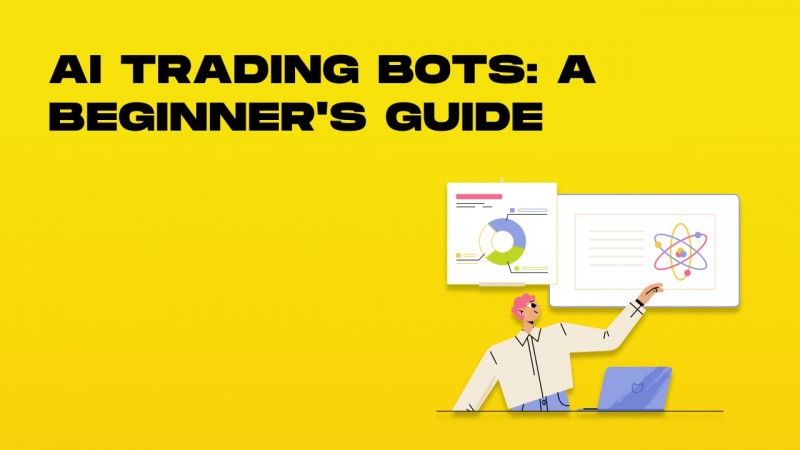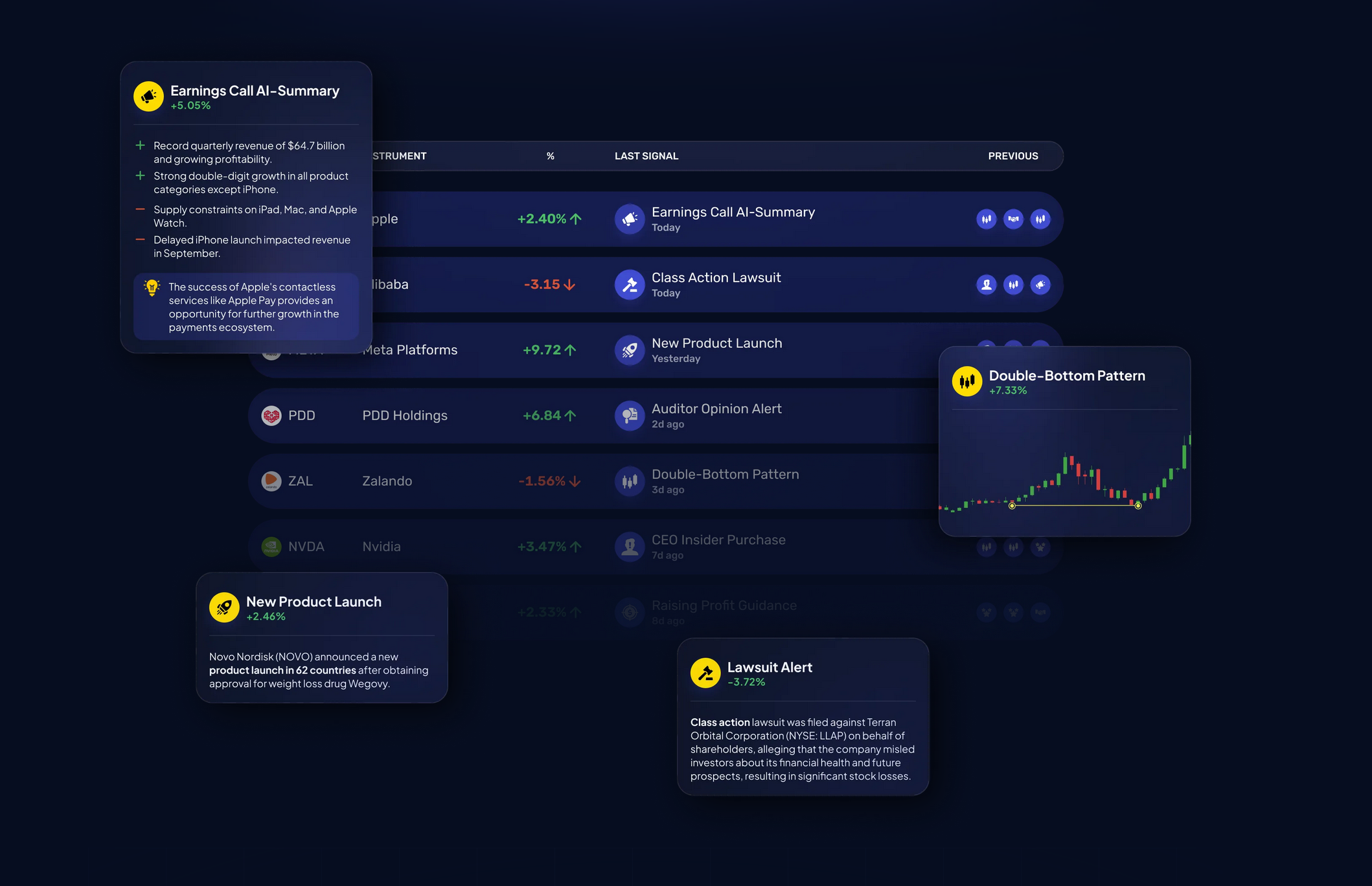20 Excellent Tips For Deciding On AI Stock Analysis Websites
20 Excellent Tips For Deciding On AI Stock Analysis Websites
Blog Article
Top 10 Tips For Evaluating The User Interface And Experience Of Ai Platform For Predicting And Analyzing Stocks
The User Interface (UI) and the User Experience (UX) within AI trading platforms that predict/analyze stock prices play a crucial role in ensuring efficiency and satisfaction. An undesigned user interface can hinder decisions even if the AI models behind it are robust. These are the top 10 guidelines for evaluating the UX/UI of these platforms:
1. Evaluate Intuitiveness and Ease of Utilization
Navigation: The platform must be simple to use. It should have clear menus, buttons and workflows.
Learning curve: Evaluate how quickly a new user can understand and use the platform, without requiring extensive training.
Consistency: Look for consistent patterns of design (e.g. buttons, color schemes etc.) across the whole platform.
2. Check Customizability
Dashboard customization - Make sure that dashboards can be customized by users using pertinent charts, metrics and data.
Layout flexibility: Ensure your platform permits you to reorder widgets, tables and charts.
Themes and preferences. Examine if there are dark/light settings or other visual preferences.
3. Visualize Data
Chart quality: Ensure the platform offers interactive charts of high quality (e.g. candlestick charts, lines charts) with zoom and pan functions.
Visual clarity: Verify that the data is clearly displayed, including appropriate labels and legends, tooltips, etc.
Real-time updates: Check if the visualizations automatically reflect changes in the market.
4. Test Speed and Reactivity
Loading times: Ensure your platform loads fast, even when handling large data sets or complicated calculations.
Real-time Performance: Find out if the platform is able to handle data feeds at no delays.
Cross-device compatibility: Make sure that the platform is compatible with all devices, including desktop, mobile and tablet.
5. The accessibility of the facility should be evaluated
Mobile App: Ensure the platform offers an application for trading via mobile that offers full functionality.
Keyboard shortcuts. Check to see if the platform offers keyboard shortcuts for users who are skilled.
Accessibility features - Check that the application is in compliance with accessibility standards.
6. Use the Examine Search and Filtering Function to examine your information.
Search functionality: Make sure that the platform allows users to quickly search for indexes, stocks, and other assets.
Advanced filters - Check to see whether you can apply filters, for instance by market cap, sector or performance metrics to reduce the number of results.
Saved searches - Verify that the platform permits you to save frequently used filters or searches.
7. Look for Alerts and Notifications
Customizable Alerts: Users may make alerts that are based on specific situations, such as price thresholds or spikes in volume and news happenings.
Delivery of notifications: Check whether notifications can be sent via multiple channels (e.g. email, SMS, app notifications).
Check for promptness and the accuracy of alerts.
8. Review the integration with other tools
Broker integration - Check that your platform seamlessly integrates with your brokerage to allow rapid trade execution.
API access. Check if a platform offers API access to users with advanced capabilities for the creation of custom workflows and tools.
Third-party integrations: Verify if the platform supports integrations with other applications (e.g., Excel, Google Sheets, trading bots).
9. Look over the Help and Support Features as well as the Support Features.
Tutorials for onboarding: Find out whether the platform has tutorials or walkthroughs for new users.
Help center: Ensure that the platform provides a comprehensive knowledge base or a help center.
Customer service: Check to see if the platform provides an efficient customer support.
10. Test The Overall Satisfaction of Users
User feedback: Read reviews and testimonials of users to gauge their overall satisfaction with the platform's UI/UX.
Trial period: Make use of a no-cost demo or trial to evaluate the platform's usability.
Error handling: Check how the platform handles errors or edge cases (e.g., invalid inputs or downtime of servers).
Bonus Tips
Aesthetics. While the design of functional products is important aesthetics, a pleasing design can boost user satisfaction.
Testing the performance of the platform under extreme stress to ensure that it's steady and responsive during times of high volatility.
Find out if the platform offers an active user community in which users can exchange feedback and offer suggestions.
Follow these tips to assess the UI/UX for AI stock-predicting and analysis platforms. This will help ensure that they are efficient and user-friendly. They should also be able to meet the requirements of trading. A well-designed UI/UX can help you make better decisions and manage your trades more effectively. View the best more about AI stock picker for more info including AI stock market, AI stock trading, trading with ai, incite, trading ai, AI stock trading, best AI stock trading bot free, ai investing, best AI stock, options ai and more.
Top 10 Tips For Assessing The Latency And Speed Of Ai Trading Platforms
When you are evaluating AI trading platforms which forecast or analyze the price of stocks, speed and latency are important factors, particularly for high-frequency and algorithmic traders. A delay of just milliseconds can impact trade execution and profitability. Here are the top 10 tips for assessing latency and speed on these platforms:
1. Real-time data feeds: How to analyze them
Speed of data delivery: Make sure the platform delivers live data (e.g. sub-millisecond delay).
Data source proximity: To decrease the amount of time required to transfer data, make sure whether your platform's servers can be found near exchanges that are major.
Data compression: Verify whether the platform is using effective techniques for data compression to speed up the delivery of data.
2. Test Trade Execution Speed
Order processing time is the speed that your order will be processed and completed through the platform.
Direct Market Access (DMA) Make sure that your platform supports DMA. This allows orders to go directly to the exchange without the necessity for intermediaries.
Execution Reports: Make sure that your platform provides specific reports on the execution of orders, with timestamps.
3. Assess Platform Responsiveness
User interface (UI) speed: Check how fast the UI on your platform responds to your inputs (e.g. click buttons or loading charts).
Chart updates: Check to see if the charts and visuals are updated in real-time with no lag.
Mobile app performance. If you are using an app for mobile, you should ensure it is performing as quickly and smoothly as the desktop app.
4. Check for Low-Latency infrastructure
Server location Check that the platform is using servers with low latency that are located close to financial hubs and exchanges.
Co-location service: Find out whether your exchange offers this option. This lets you host trading algorithms on servers near the exchange.
High-speed networks: Determine that the platform utilizes high-speed fiber-optic networks or other low-latency technology.
5. Evaluation of Backtesting and Simulation speed
Historical data processing: See how quickly your platform analyzes and processes historical data.
Simulation latency: Make sure the platform can simulate trades in real time without any noticeable delay.
Parallel processing: Check if your platform uses parallel or distributed computing to speed up calculations.
6. Estimate API Latency
API response time It is the time at which an API platform responds to requests.
Rate limits. Check to see whether there are acceptable limits for the API. This can help prevent delays in high-frequency transactions.
WebSocket support - Check to see if your system is running the WebSocket protocol for low-latency real-time streaming of data.
7. Test Platform Stability under Load
High-volume Trading: Play with high numbers of trading scenarios to determine if your platform is reliable and stable.
Market volatility: Test the platform at times of high volatility to test whether it can handle rapid pricing adjustments.
Stress testing Test your strategy: Find out whether the platform permits you to test your strategy in extreme circumstances.
8. Assess Connectivity and Network
Internet speed requirements: To ensure optimal performance, ensure that your internet speed meets the recommended speed for your platform.
Redundant Connections: To prevent interruptions, make sure that your platform supports redundant internet connections.
VPN latency: If using a VPN be sure to check whether it causes significant latency and whether the platform has alternatives.
9. Make sure to look for speed optimization features
Pre-trade Analyses: Make sure that the platform has pre-trade analyis to optimize order processing and execution speed.
Smart order route (SOR) You can check to see if SOR is being used by the platform to determine the most speedy and cost-effective execution venues.
Monitoring latency: Determine that the platform offers tools to monitor and analyze latency in real-time.
Benchmarks for User Feedback Review
User reviews: Check for user feedback on the platform to gauge its speed and latencies.
Benchmarks from third-party sources: Search for independent benchmarks and reviews which evaluate the platform's performance to its competitors.
Case studies: Check whether the platform has case studies or testimonies which highlight the features that are low-latency.
Bonus Tips
Free trial period: Test the platform’s latency and speed in real-world scenarios by using a demo or free trial.
Support for customers: Make sure the platform has assistance for issues related to latency or for optimization.
Hardware requirements. Find out the platform needs specialized hardware (e.g. an ultra-fast computer) in order to run at optimum speed.
With these suggestions, you can effectively assess the performance and speed of AI stock predicting/analyzing trading platforms make sure you select one that is compatible with your trading needs and minimizes the time it takes to complete. A low latency is essential for high-frequency traders and algorithmic traders. Even minor delays can have a huge impact on profitability. Check out the top rated ai share trading for blog advice including best ai penny stocks, how to use ai for copyright trading, AI stock investing, stock predictor, AI stock predictions, free AI stock picker, best ai trading platform, best AI stocks to buy now, how to use ai for stock trading, ai investment tools and more.